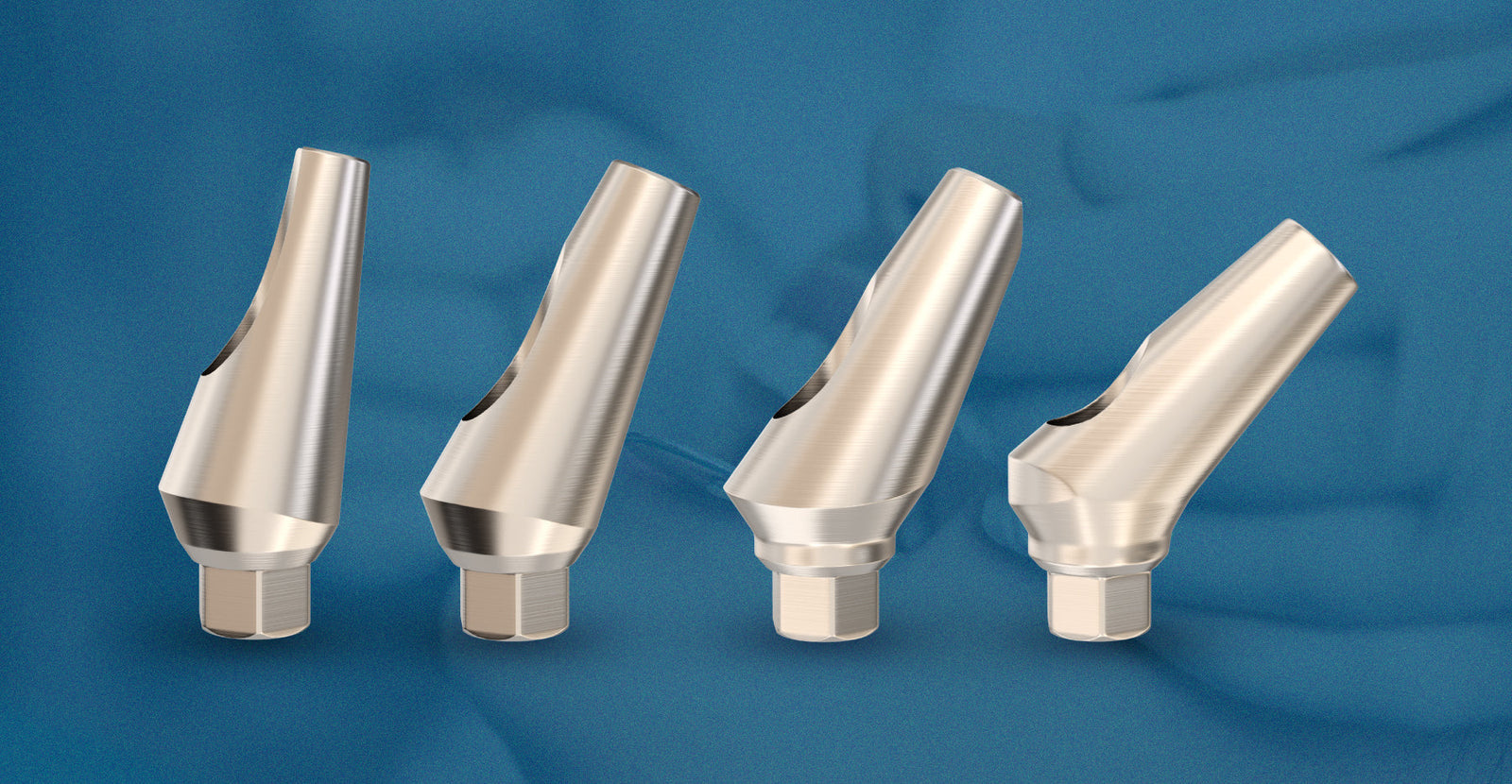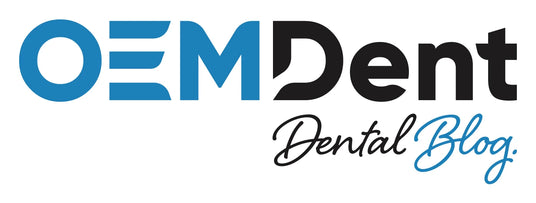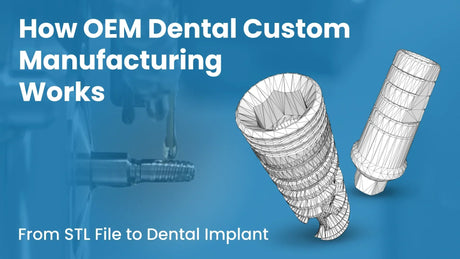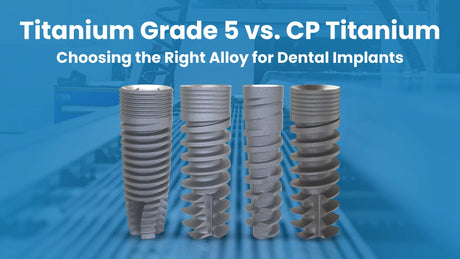

The Ultimate Guide to Choosing Titanium vs. Zirconia Abutments
Introduction: Why Abutments Matter
A dental implant abutment isn’t just a small connector - it plays a huge role in implant success. A poor choice can lead to gum recession, implant failure, or discomfort, while the right one ensures stability, aesthetics, and long-term durability.
In this guide, you’ll learn:
-
The different types of abutments (stock, custom, angled, multi-unit, and more)
-
When to use each type
-
Pros and cons of materials (titanium vs. zirconia vs. hybrid)
-
How to choose the right one for each case
-
Digital dentistry innovations in abutment selection
-
Common mistakes and how to avoid them
Let’s break it all down!
What Is a Dental Implant Abutment?
A dental implant abutment is the connector between the implant fixture (screw) and the final crown, bridge, or denture. It serves three critical purposes:
✅ Stability – Keeps the prosthetic secure
✅ Force Distribution – Ensures even pressure on the implant
✅ Aesthetics – Helps create a natural gum contour
The choice of abutment directly affects the final result, both in function and appearance.
Types of Dental Implant Abutments
1. Stock Abutments (Pre-Fabricated)
What are they?
Stock abutments are pre-made, one-size-fits-all pieces that come in standard shapes and sizes.
When to use them:
✔️ Simple, straightforward cases
✔️ Back teeth where aesthetics aren’t a priority
✔️ Patients on a budget
Pros:
✅ Affordable – No extra lab fees
✅ Readily available – Can be used immediately
✅ Works for basic cases
Cons:
❌ Less precise fit – May not match the patient’s gum shape perfectly
❌ Limited aesthetic options – Can sometimes lead to an unnatural look
❌ Higher risk of complications – Poor fit can lead to gum irritation or plaque buildup
2. Custom Abutments (Patient-Specific)
What are they?
Custom abutments are individually designed for each patient using digital scans or manual impressions.
When to use them:
✔️ When the implant is placed at an angle
✔️ In the front teeth (aesthetic zone)
✔️ When soft tissue contouring is needed
Pros:
✅ Perfect fit – Designed to match the patient’s gum line
✅ Better soft tissue adaptation – Reduces irritation
✅ More natural-looking results – Especially in visible areas
Cons:
❌ Higher cost – More expensive than stock abutments
❌ Takes longer – Requires lab fabrication
💡 Case Example: A patient with thin gums in the front teeth needs a custom abutment to prevent the metal from showing through.
3. Angled Abutments
What are they?
Angled abutments correct implant placement issues when an implant is positioned at an angle.
When to use them:
✔️ When an implant is not perfectly straight
✔️ To improve alignment for crowns or bridges
Pros:
✅ Helps avoid complex surgeries – Can adjust for placement errors
✅ Improves occlusion – Aligns bite forces properly
Cons:
❌ More expensive than straight abutments
❌ Not always necessary – Only used in specific cases
💡 Case Example: A patient has an implant placed at an angle due to limited bone in the upper jaw. Instead of redoing the surgery, the dentist uses an angled abutment to straighten the final tooth.
4. Healing Abutments
What are they?
Temporary abutments used to shape the gums before the final abutment is placed.
When to use them:
✔️ To allow proper gum healing after implant surgery
✔️ Before placing a custom abutment
Pros:
✅ Encourages soft tissue healing
✅ Creates a natural gum contour
Cons:
❌ Not a permanent solution
5. Multi-Unit Abutments
What are they?
Multi-unit abutments connect multiple implants to support a full-arch prosthesis (e.g., implant dentures).
When to use them:
✔️ For full-mouth restorations (All-on-4, All-on-6)
✔️ When multiple implants need to be connected
Pros:
✅ Distributes bite force evenly
✅ Provides a strong foundation for full-arch restorations
Materials: Titanium vs. Zirconia vs. Hybrid
|
Material |
Pros |
Cons |
Best For |
|
Titanium |
Strong, long-lasting, biocompatible |
Can show through thin gums |
Back teeth, high-load areas |
|
Zirconia |
Aesthetic, tooth-colored, biocompatible |
Less durable than titanium |
Front teeth (aesthetic zone) |
|
Hybrid |
Combines strength + aesthetics |
Expensive |
When both durability & aesthetics are needed |
💡 Rule of Thumb: If it’s a back tooth, go for titanium abutments. If it’s a front tooth, zirconia abutments look better.
Choosing the Right Abutment: A Step-by-Step Guide
1️⃣ Consider the tooth location – Front = aesthetics. Back = strength.
2️⃣ Look at gum thickness – Thin gums? Use zirconia to avoid metal showing through.
3️⃣ Evaluate implant position – Misaligned? Go for an angled abutment.
4️⃣ Think about cost – Custom = better results but higher price.
5️⃣ Plan for the long-term – The right choice prevents future complications.
The Role of Digital Dentistry
🔹 CAD/CAM Design: Ensures custom abutments fit perfectly
🔹 3D Printing: Creates abutments with high precision
🔹 Guided Surgery: Helps place implants in the ideal position
💡 Modern technology reduces human error, ensuring a perfect fit!
Common Mistakes to Avoid
🚫 Choosing the wrong material – Titanium in front teeth can look bad.
🚫 Ignoring gum health – A bad fit can lead to infection & implant failure.
🚫 Skipping low quality custom abutments in complex cases – Precision matters!
🚫 Not considering occlusion – Poor alignment can cause excessive bite force.
Final Thoughts
Choosing the right abutment isn’t just about cost. It’s about long-term success. Whether it’s a simple stock abutment or a custom zirconia one, making the right choice ensures a comfortable, aesthetic, and durable implant.
💬 Have questions? Contact Us and let us know!😃

OEMDent.com offers uncompromised quality, cost-effective dental implants & prosthetics compatible with leading implant systems. We go beyond manufacturing, offering OEM & Private Label services to meet your dental needs.






